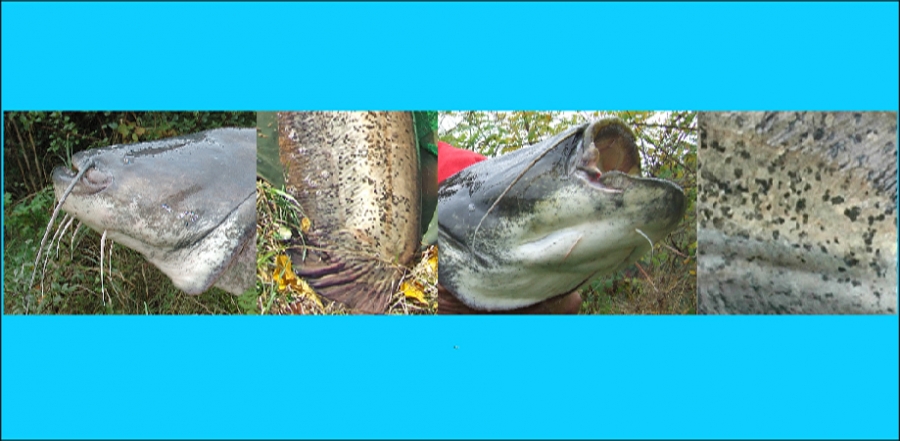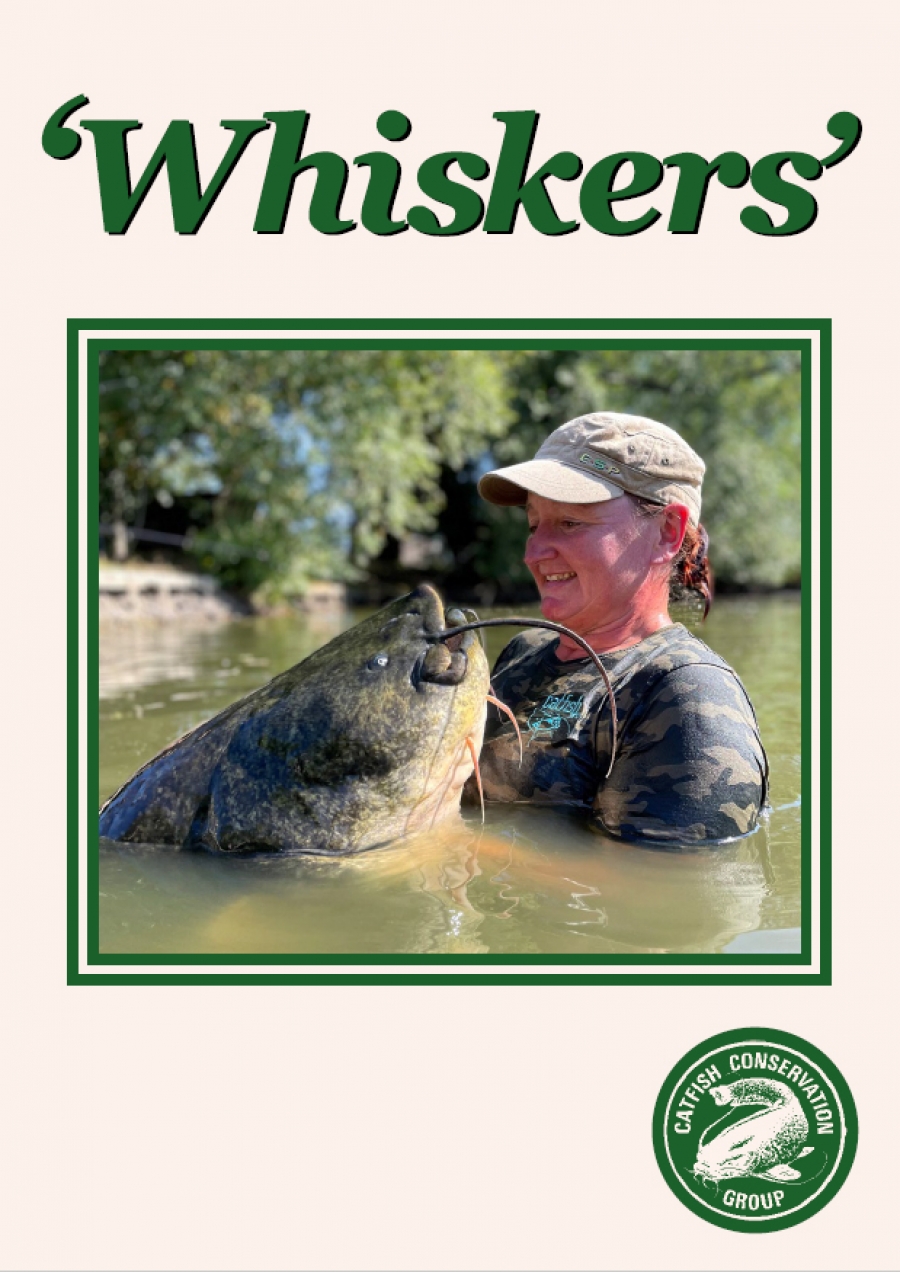


There are more than two thousand species of catfish to be found in the world today. The smallest is fully-grown at 20 mm. the largest is reputed to attain a length of more than five metres. This fish is the European wels catfish, Silurus glanis, is one of the world's largest freshwater fish and is the largest freshwater fish in Europe. It can be found throughout Europe and into Asia.
The wels catfish was first successfully introduced into the UK over 130 years ago by the Duke of Bedford who stocked 70 of them into his now famous lakes at Woburn Abbey in Bedfordshire. We still consider wels catfish as rarities in Britain, although their distribution is increasing every year and there are now catfish waters in nearly every county in England. For a time it was certainly true that the majority of the UK waters were within 50 miles of Woburn Abbey, however there was a big increase in numbers of catfish coming into the UK in the late 1990s when fish farmers and dealers starting importing cats from mainland Europe with the vast majority of those coming from Croatia. Since then as fisheries have matured and stocks have been managed this had led to a steady if not huge availability of catfish to those looking to increase existing stocks or introduce cats into their waters for the first time. There are now over 500 licenced waters in the UK and possibly as many as 100 unlicensed you should never be too far away from a water containing wels catfish.
The wels catfish is originally from the eastern countries in Europe and until recently thought to originate no further west than Germany.However, they have recently been re-classified when fossilised remains of one were discovered in Belgium. Their near neighbours in France are still arguing amongst themselves to some extent as to whether catfish had inhabited some of their eastern rivers previously!
Many of the best catfish locations in Europe (we know about) have resulted from introductions in the last 25 years or so; Italy, Spain and France all now have established populations in some of their major rivers. One of the primary reasons for this is that catfish thrive on good summer temperatures coupled with an abundance of food and low levels of commercial fishing. The western European countries have great climates and food stocks, but do not suffer the commercial fishing pressure that affects most Eastern European rivers, where catfish are an important food resource.
France has several major rivers containing catfish; Saone, Seille, Doubs, Tarn, Garonne, Loire, Cher, Rhone, Petit Rhone,Vienne,Yonne and Seine to name a few. Germany has many fine catfish waters including the Rhine, Donau, Neckar, Main and Naab.
Although cats are relatively new in Spain having been introduced in the late 1970s, some of the biggest fish in Western Europe reside in the Rio Ebro and its tributaries the Segre and Cinca. The mighty River Po drains much of northern Italy and has a thriving population of huge catfish that have been caught to well over 100 Kg. The smaller River Mincio too has a good head of catfish.
Few anglers venture into Eastern Europe where commercial fishing is rife but this is where wels catfish are indigenous and with a lot of research and perseverance good catfishing can be found. Large catfish exist in the Rivers Volga, Ural, Dneiper and Don in Russia, The Danube in Hungary, and Romania, and the huge Vranov Reservoir system in The Czech Republic.
Kazakhstan in Asia introduced catfish in to the River Ili sytem the mid 20th century and these have now attained huge proportions with fish of over 100kg captured every season. The mighty Syr Darya to the west has a natural catfish population as well as perhaps the biggest catfish to be caught anywhere. Life's just too short for the avid cat fisher!
Biology
The wels, like most very large fish, has a tremendous growth rate, especially where there is an abundance of available food. The fry are said to feed on insect larvae, tadpoles, tubifex worms and other invertebrates, before moving on to larger food items such as fish, mussels, crayfish, leeches, worms and even small birds and mammals. Prey is detected by both smell and vibration. European catfish possesses a well developed 'weberian apparatus'; a type of bone in the back of the head which helps amplify sound and vibration (a tethered livebait for instance). Although live fish make up a good proportion of the catfish's diet, they are primarily scavengers and will eat just about anything.
Water temperature has a large bearing on growth rates; this is especially noticeable in countries that have long hot summers such as those in central and southern Europe. In Spain for example, catfish were first stocked into the River Ebro system, as small fish in 1978, there are now plenty of 50-80 kg fish being caught with a best of over 100kg There are almost certainly 120 kg fish swimming in this river - all within thirty odd years of its original stocking! In warm water research centres in Germany, wels have been reared to more than 32 kg in only five years, a rate only matched by the giant South American fish; Arapaima gigas.
Breeding
During spring and early summer, where the water temperature reaches a constant 20 0 c. catfish spawn. A 'nest' is made within the confines of tree roots such as willow or alder and underwater vegetation is also used. The female is said to produce up to 100,000 sticky eggs about 3 mm. in diameter, these will hatch in less than five days. The fast growing fry are attended by the males until large enough to fend for themselves; only 10% of the fry are likely to survive.
Growth rates
In the UK the growth rates can vary dramatically, excluding very short term weight gains, growth rates of 1-2lbs a year would be average, 3-4lbs a year above average and over 4lbs a year excellent. There are examples of waters claiming growth rates of almost 10lb per year for a sustained period. Fisheries in the south benefit from slightly warmer weather and generally milder spring and autumn periods can extend the feeding year by 2-3 months which makes a big difference over the lifetime of a catfish. A 10 year old catfish could easily have an additional 20-30 months feeding time over its northern cousins.
In order to understand growth rates the CCG started a project in 2014 to microchip as many catfish in our Adams Pool fishery as we could. In the first summer we captured and chipped around 30 catfish, and it’s hoped these and others will be monitored over the coming years to understand growth in more detail. We are not the first fishery to do this and it’s hoped that other fisheries can provide data in order for it provide useful information on ideal conditions for maximum catfish growth in the UK. Growth rates are not just down to food availability, but also water quality, depth of water, average temps, other fish stocks / competition and type of food (eg pellets/ boilies v natural food) to name just a few.
Impact on other species
The wels catfish, although predatory has never been demonstrated to have a detrimental impact on other species of fish in UK waters. At the time of writing there are over 500 licenced catfish waters in the UK, out of which only a handful of waters are known to have become dominated by cats and these tend to be commercial waters. Just like Pike, it’s felt that where waters are left to find their own balance this will even itself out fairly quickly and the cats will start to control their own numbers. The reality with commercial type waters is the cats are usually well managed. The CCG have helped one or two waters out by finding new homes for these catfish often creating new catfish fisheries in the process. Catfish are a positive help in fisheries in control of sick/dead fish and have the advantage of preying on crayfish, so in waters plagued by crayfish catfish can help keep them under control.
The CCG has continually called for more long term scientific studies to ascertain any possible environmental impact of wels catfish. In mainland Europe some study has taken place but this is mainly around the impact on the Ebro system which is obviously not a fair comparison to the situation in the UK. There is plenty of work to be done in this area if we are to ascertain more than just anecdotal evidence.

Out Now!
Whiskers magazine is Free to all members!
Non-members can purchase previous copies from the Membership Secretary